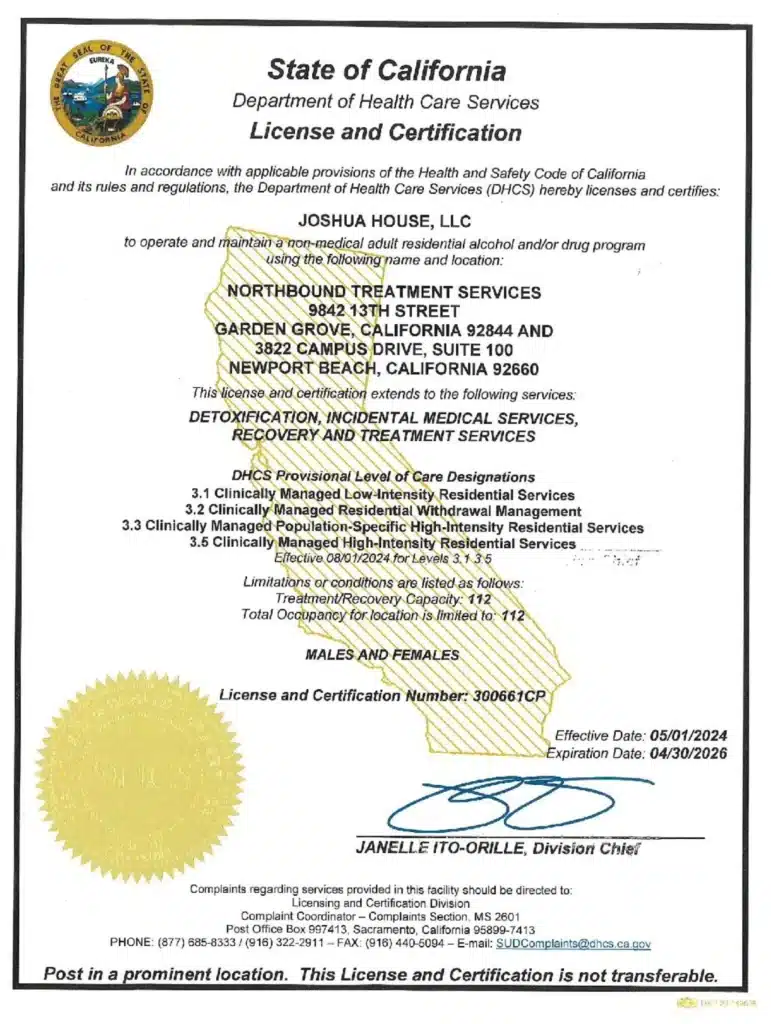If you’re wondering, “Am I addicted to meth?”, you’re not alone. Meth addiction symptoms take over the whole body. While not all of them are physically present, all of them are significant. The feeling of euphoria is what people seek again and again. By chasing the high, they’ll begin to abuse meth more frequently and in increased doses. Once abuse turns to dependency and dependency turns to addiction, you don’t have control over the decision-making process. Meth changes the physiology of your brain, and that’s where addiction treatment at a rehabilitation center comes in.
Meth addiction symptoms occur during the withdrawal period. Once your body and brain are used to functioning with meth, when it’s not present, there are serious consequences. These signs and symptoms often include anxiety, fatigue, severe depression, among other psychological changes. This is a far cry from the pleasurable feelings of the high, which is why many continue down the path of addiction.
The things that used to bring you joy before, like watching a movie, working out at the gym, or eating a piece of cake, aren’t there anymore. They are replaced by the feelings of meth alone.
The body learns to adapt to a higher intake than before, which can result in overdose. This may lead to seizures, heart problems, coma, and for some, death.
A person who has experienced an overdose isn’t necessarily addicted, since this can happen even if a person uses meth one time. However, it is a common meth addiction symptom that can have permanent and long term effects. Physical meth addiction symptoms further illustrate how meth breaks down the body from the inside out. For example, “meth mouth” refers to rotting teeth as the chemicals break down the enamel and structure of the teeth. Significant weight loss is also a common symptom since meth often suppresses the appetite.
For friends or loved ones concerned about someone abusing meth, there may also be evidence of meth paraphernalia, drastic mood swings, and other ways that signal something is “off,” whether it’s the beginning stages of drug abuse or addiction. Even if a person has no previous history of meth use before, addiction doesn’t look the same for everyone. When there’s a concern and symptoms begin to appear, it’s always best to show support and speak up.
How Does Meth Addiction Occur?
Ever want to feel more confident, outgoing, and gregarious? That’s the illusion of how this highly addictive drug makes a person feel. But, it’s not real. It’s a temporary trick of the brain that leads to long-term damage to every aspect of a person’s life. Meth releases dopamine, which triggers feelings of happiness and motivation, and provides an energetic burst or high. It leaves people craving this feeling and doing whatever it takes to chase it, regardless of how destructive it is.
Although individual factors affect metabolization, it typically takes 12 hours for meth to be reduced by half in the body a full 24 hours for it to completely be processed all the way through. Once this happens, the body instantly craves more. During the crash, people want to alleviate their feelings of depression and anxiety by increasing how often they turn to meth to get the quick fix they’re looking for.
There’s no set time that makes a person addicted, but with a repeated pattern of substance abuse, meth addiction is inevitable. Trying to abstain from meth use alone isn’t safe and not as successful as receiving meth addiction treatment through a medically managed program. How the body reacts at any time during meth addiction, even during the withdrawal stage, can lead to dangerous side effects.
Plus, overcoming addiction takes regular emotional support, which may not be available at home. The first step to recovery and sustained sobriety is detox. From there, other therapy programs will provide the tools and techniques needed to create a new way of living sober.
What If Relapse Occurs?
Going through all stages of treatment helps prevent relapse from occurring, but for anyone experiencing meth addiction, it’s always a strong possibility of happening. If it does, it’s not a failure, but rather a roadblock and a chance to start again.
The power of addiction takes over the body and mind, so any sudden change to this, even if it’s for the betterment of a person’s health and well-being is a shock to the system. If a person decides to detox without continuing treatment, they are still vulnerable to repeating the same patterns because they haven’t found the right tools to cope yet.
The path to recovery is not an easy one, but well worth it. Treatment options may include administered medication to minimize cravings and ease any signs of meth withdrawal symptoms in the early stages. Following detox, a person continues to heal through a residential treatment program, outpatient therapy, and addiction support services. The goal is to get to a place of independent sobriety and know there are always people available to assist during and after the programs are completed.
Side Effects of Meth Abuse
Leading up to addiction, there are short-term side effects of meth abuse that may be indicative of heading down a dangerous track of use. These may include:
- Increased blood pressure
- Increased stimulation and activity
- Feelings of itchiness
- Paranoia
Side effects occur depending on a person’s history with meth use or any type of substance abuse. Age, weight, and general health play a part in how the body processes and reacts to the highly addictive drug. Maybe during the first use, side effects aren’t as severe as one might imagine. That doesn’t mean it’s not doing internal damage to the body and building a tolerance, which will end with addiction.
To prevent crystal meth addiction, it is important to recognize the behaviors in advance. This may be difficult for someone who has not been through the process of treatment before. They may not be equipped with the tools and coping mechanisms needed to remove or avoid temptation.
How Is Meth Abuse Similar to Cocaine?
Though both dangerous, addictive drugs, meth takes longer to break down in the body, which leaves a longer high than cocaine. The regular half-life of meth is 12 hours, compared to no more than one hour for cocaine.
However, meth can be smoked or injected just like cocaine. All of the same symptoms of meth addiction from these methods can still occur; respiratory and breathing problems from inhaling it, risk for blood-borne disease through injecting. It’s also common for meth users to use other substances, such as cocaine and alcohol.
The mix of different drugs adds another level of dangerous and violent behavior since all of them are competing for space in the brain. Both meth and cocaine are considered stimulates, which can overpower the brain and cause serious problems as a result. It can also prolong the detox and healing process, since the body has to stabilize from the use of more than one drug.
Drug use of any kind is dangerous and will have similar negative effects leading up, during, and after the addiction. The sooner you decide to seek treatment, the better it is for your recovery.
Recovering from Meth Addiction
Recovery is a slow process. Unlike the high of meth, it doesn’t come with quick results. It is painful, especially in the beginning. However, each step away from addiction is a step toward a stronger, sober future. This is a future that can be built upon to accomplish goals and live an independent, healthy life where drugs do not have a place.
Detox is the first step, regardless of if it’s the first time for treatment or a second or third try. This process takes a few days to rid the body of the drug fully and get to a stabilized place to move forward. The symptoms of meth abuse vary in intensity and some may continue to linger as you enter the next step.
The next phase of care is residential rehab. This is an opportunity to fully focus on recovery with a set structure and full support in place. With different therapies and time for reflection and physical and mental activities, it provides a well-rounded approach to care. Learning how to beat a meth addiction requires honing in on the roots of what caused it to occur in the first place. This understanding creates a foundation to build upon for the future.
There are habits and other influences that helped form the addiction that have to change in order to continue a sober path. Through rehab, these strategies are discussed and implemented to begin anew. This is continued after the three months of rehab as a person graduates into outpatient care.
The intensive outpatient program follows the same philosophies and constructs of care with the addition of resources to rebuild a life broken by addiction. There is greater scheduling flexibility, since this level of treatment doesn’t require a residential stay, although some may choose sober living housing a gentler transition. It still requires the same commitment and accountability as rehab, but with the continued growth and independence of the person going through recovery.
They call healing from addiction a journey for a reason. Although there’s a set path, there may be roadblocks that appear that the person has to learn how to navigate safely. It may not be linear, but it eventually will land you in the hopeful and positive place you’re meant to be.
Author
-

President, CEO & Founder at Northbound Treatment Network
Paul Alexander is the CEO, President & Founder of Northbound Treatment Network in Newport Beach, California. He believes wholeheartedly in transformational leadership, organizational health and effective, fully integrated substance use disorder and mental health treatment. With over 27 years of experience in behavioral healthcare, Paul has extensive knowledge of “in vivo” treatment modalities, clinical development, operations, strategy, marketing and financial planning. He has been widely recognized for his development of collegiate-based residential treatment programs for students in recovery and authored a research study at The University of California confirming this modality’s effectiveness.
Paul’s comprehensive professional experience, willingness to innovate, and emphasis on organizational health are vital factors in Northbound’s continued success. Paul received his Certified Addiction Treatment Specialist training at Saddleback College in Mission Viejo, CA, and was awarded Outstanding Alumni Service Award in 2002. Paul holds a Bachelor of Arts degree in Criminology, Law and Society, Summa Cum Laude, from University of California, Irvine, and a Juris Doctorate degree from Loyola Law School of Los Angeles. Paul currently serves on The National Association of Addiction Treatment Providers (NAATP) board. In addition, he serves on The Family Recovery Foundation board and The CarePossible board in Orange County; both organizations are committed to raising funds for family recovery and treatment for former military personnel. Paul is in recovery himself and lives in Orange County with his wife Silvana and his two young sons, Noah and Dean.







